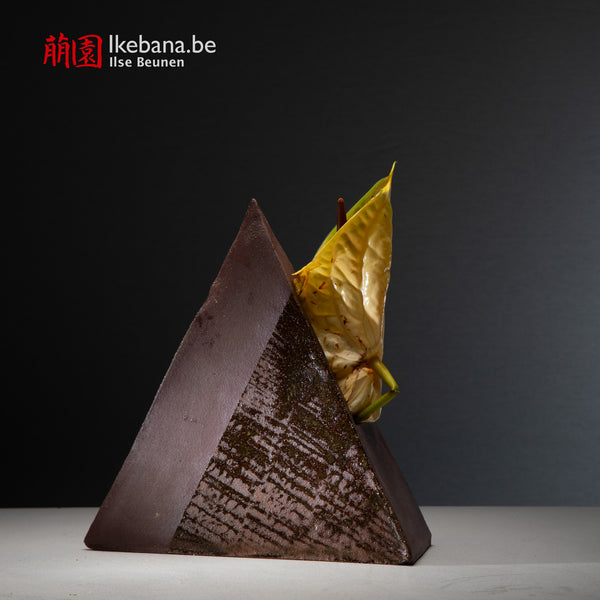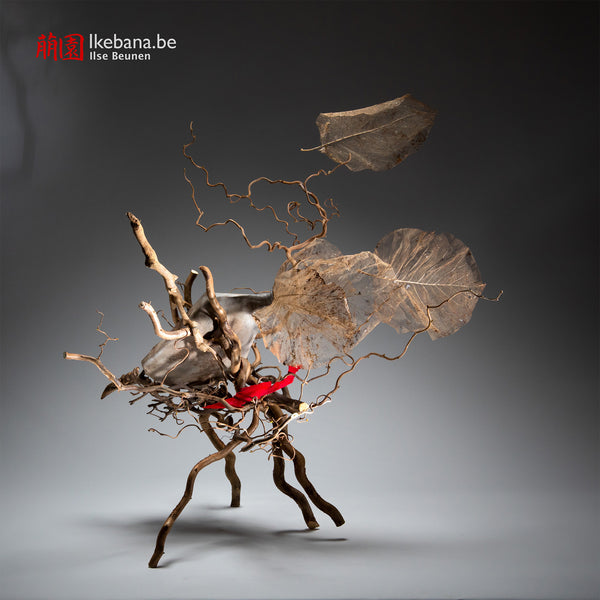Imperfect is just Perfect: The Harmony of Ikebana and Wabi-Sabi - By Ilse Beunen

In the heart of Japanese culture lies the principle of wabi-sabi, a philosophy celebrating beauty in imperfection, transience, and simplicity. This concept, rooted in Zen Buddhism, starkly contrasts the Western pursuit of perfection. Wabi-Sabi advocates for a deep connection to the natural world, where the beauty of the flawed and fleeting is acknowledged and honored.
Historical Roots and Evolution
Wabi-sabi's journey began alongside the development of the Japanese tea ceremony in the 15th and 16th centuries, blending the rustic simplicity of "wabi" with the serene beauty of aging "sabi." It has since seeped into various facets of Japanese culture, from pottery and architecture to literature, serving as a guide to finding significance in life's impermanent, incomplete, and imperfect aspects.
A Personal Encounter with Wabi-Sabi
My first encounter with wabi-sabi came from my husband's story about his early travels to Japan. While visiting a Buddhist temple near Osaka, he was drawn to a timeworn statue, barely holding onto its once vibrant red paint. Proposing to repaint it to a monk, he got a succinct yet deeply impactful response: "Nothing lasts forever".
This tale began my journey with wabi-sabi, and the more ikebana I do, the more this philosophy influences our daily lives. We've learned to find joy in the unpolished aspects of life.
For example, we've come to appreciate the natural patina on the sidewalk in front of our house. Our sidewalk contrasts with the sidewalks of our neighbors, which often use high-pressure cleaners for a spotless appearance. This results in a patchwork of clean and untouched sections along the street. My husband and I find little value in this cleaning. Instead, we embrace the character and aged beauty the patina offers. And let's be honest; it is a great excuse to spend more time doing ikebana than cleaning the sidewalk :-).

Ikebana: The Artistic Expression of Wabi-Sabi
Ikebana, the Japanese art of flower arranging, is a beautiful representation of wabi-sabi, celebrating the natural imperfections and transient beauty of the floral world. Each creation reflects the arranger's soul, embracing the beauty in asymmetry, the grace in aging, and the dignity of natural forms.
The story behind this arrangement shows the beauty in the imperfect. Initially rejected and thrown away by the ceramist for collapsing during the firing process, the container found a new life thanks to an ikebana friend who saw its potential. After years of use, it was gifted to me, offering more satisfaction than a pristine vessel ever could. Its distinctiveness and history enrich the arrangement, turning imperfection into an asset. 
Through the seasons, ikebana reminds us about the cycle of life and urges us to find contentment and wisdom in life's imperfections. Wabi-sabi and ikebana invite us to reflect on the beauty in the impermanent, the imperfect, and the incomplete.
Remember: 'Imperfect is just Perfect'

